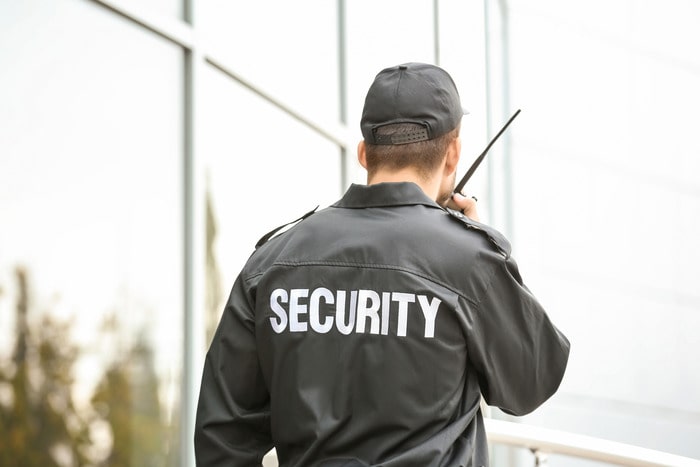
Security is a top priority for businesses, residential areas, and public spaces. Protecting assets, employees, and the general public from threats like theft, vandalism, and trespassing is crucial. When it comes to security solutions, two primary options are widely used: security guards and surveillance cameras. While both play significant roles in maintaining safety, they have distinct advantages and limitations. In this article, we will compare security guards and surveillance cameras to determine which is the better security solution.
The Role of Security Guards:
Security guards are trained professionals who actively monitor and protect premises. They provide a physical presence that acts as a deterrent to criminal activities. Security personnel can respond to incidents in real-time, perform inspections, and handle emergencies, such as medical situations or fires. Additionally, they interact with employees, residents, and visitors, ensuring that only authorized individuals gain access to restricted areas.
One of the key benefits of security guards is their ability to make quick decisions and react appropriately to different situations. Their human intuition allows them to assess suspicious behavior and intervene before a crime occurs. Moreover, they can adapt to changing circumstances, which makes them particularly effective in dynamic environments such as retail stores, event venues, and corporate offices.
However, security guards also have limitations. Hiring and training personnel can be costly, and their effectiveness depends on their level of skill and experience. There is also a risk of human error, as fatigue or misjudgment can lead to security breaches. Additionally, security guards cannot be everywhere at once, meaning there may be blind spots in their coverage.
The Role of Surveillance Cameras:
Surveillance cameras provide a technological approach to security. These devices monitor and record activities around the clock, offering continuous surveillance without the need for human intervention. Modern security cameras come equipped with advanced features such as motion detection, night vision, and artificial intelligence-driven analytics that can identify potential threats.
One of the primary advantages of surveillance cameras is their ability to provide evidence in the event of an incident. Recorded footage can be used by law enforcement to investigate crimes and identify suspects. Additionally, cameras serve as a deterrent, discouraging criminal activities as potential offenders know they are being watched.
Unlike security guards, cameras do not suffer from fatigue or human error. They can cover multiple locations simultaneously, reducing blind spots and providing a comprehensive view of an area. Furthermore, with the advent of cloud storage and remote monitoring, security personnel or business owners can access live footage from anywhere, enhancing security management.
Despite their benefits, surveillance cameras also have limitations. They are passive security measures, meaning they can only record events rather than physically intervene. If an incident occurs, security personnel or law enforcement must be alerted and dispatched separately. Additionally, cameras can be vulnerable to hacking, tampering, or power outages, which can compromise security effectiveness.
Comparing Security Guards and Surveillance Cameras:
When deciding between security guards and surveillance cameras, it is essential to consider the specific security needs of a location. Security guards offer a proactive approach by physically responding to threats and preventing incidents before they escalate. Their presence alone can discourage criminal behavior, and their ability to interact with people makes them valuable in situations requiring human judgment.
On the other hand, surveillance cameras provide continuous monitoring and serve as a cost-effective long-term solution. They are particularly useful for gathering evidence and maintaining a record of activities in a given area. However, they lack the ability to respond immediately to threats, making them more suitable as a complementary security measure rather than a standalone solution.
The Best Approach A Combination of Both:
Instead of choosing between security guards and surveillance cameras, many businesses and institutions adopt a hybrid approach that integrates both security measures. By combining human presence with technology, organizations can maximize security coverage and effectiveness. Security guards can use surveillance cameras to monitor larger areas and respond swiftly to detected threats. Likewise, recorded footage can assist guards in identifying suspicious activities and reviewing incidents for future improvements.
Ultimately, the best security solution depends on factors such as budget, location size, threat level, and specific security requirements. While security guards provide immediate action and deterrence, surveillance cameras offer extensive coverage and documentation. By leveraging both, businesses and property owners can create a robust security system that enhances protection and minimizes vulnerabilities.
Final Thought:
Both security guards and surveillance cameras play crucial roles in ensuring safety and security. While security guards offer a proactive and human-driven approach, surveillance cameras provide continuous monitoring and evidence collection. Instead of viewing them as competing solutions, organizations should consider integrating both to achieve comprehensive security coverage. With the right combination of manpower and technology, businesses and individuals can enhance their security measures and better protect their assets and people from potential threats.





Leave a Reply